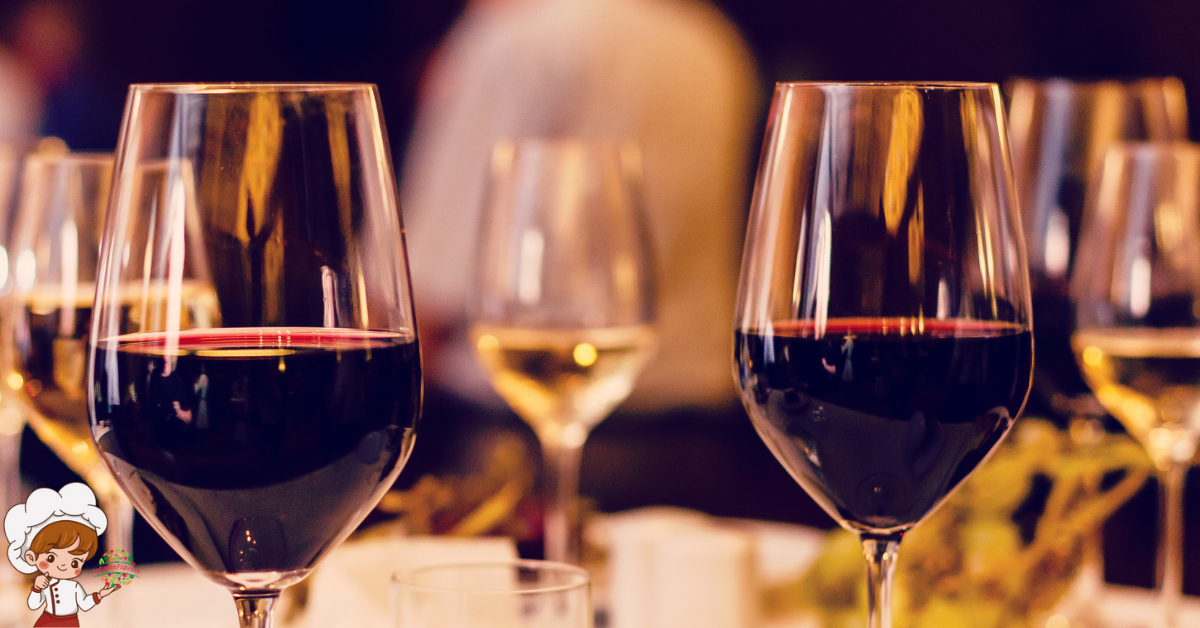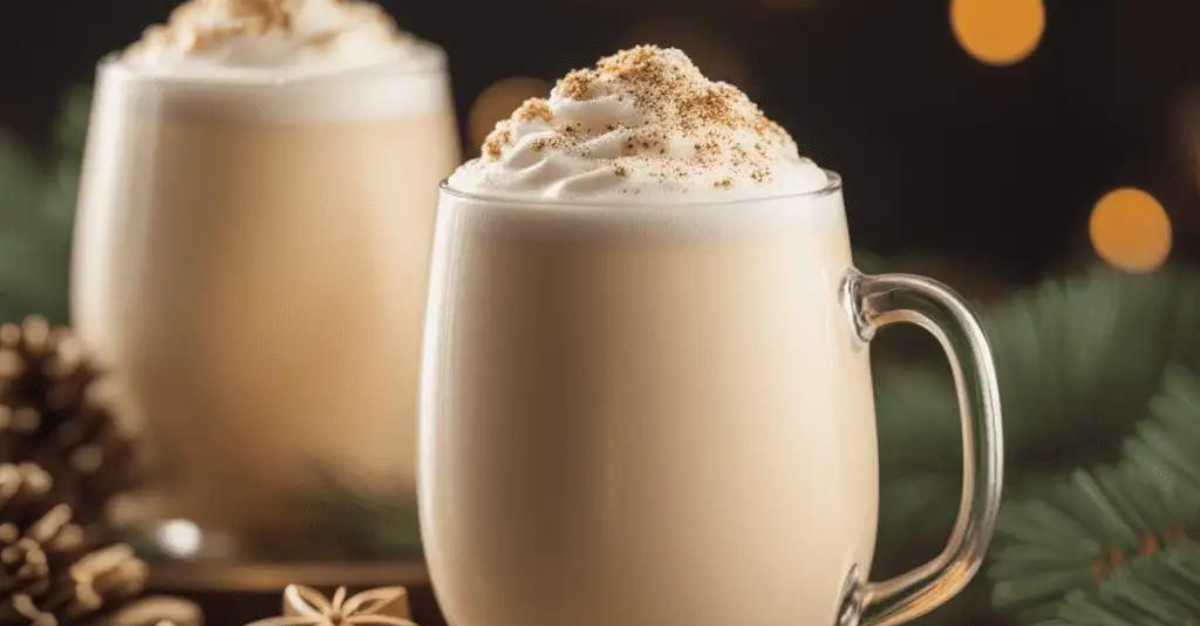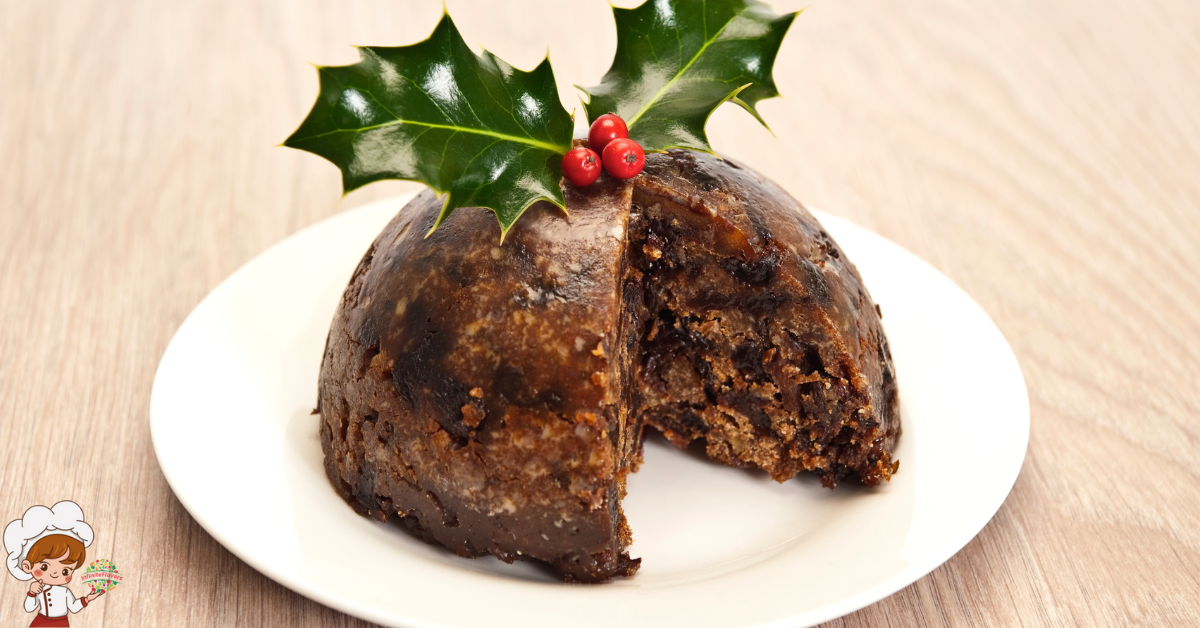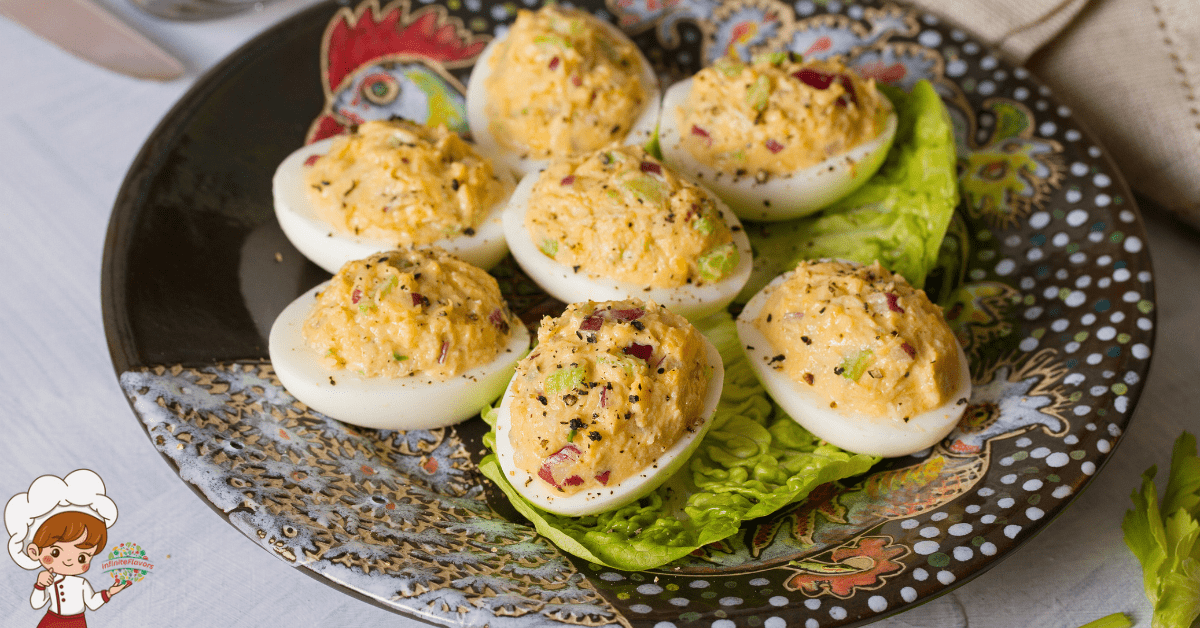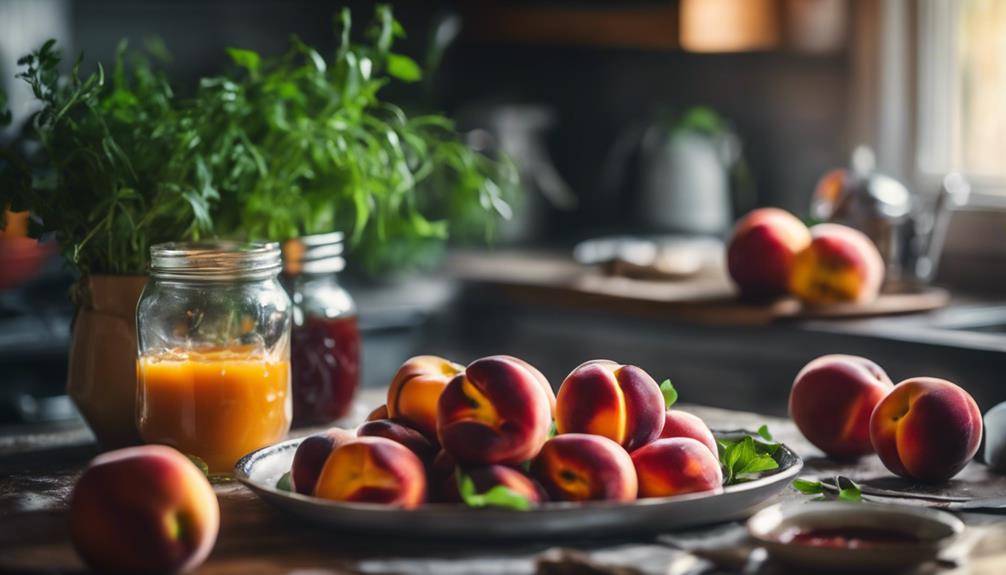The Best Baked Ham for the Holidays

Baked Ham is a must have as the festive season approaches, tables around the world are adorned with a succulent centerpiece that has become synonymous with holiday feasts – the baked ham. This culinary tradition has deep historical roots, and its journey to becoming a holiday staple is a story worth savoring.
Cook Like a Pro—Click Here To Get Your Perfect Pan Today
Ancient Beginnings:
The roots of ham consumption trace back to ancient times when preserving meat was a necessity for survival. Techniques like salting and smoking were employed to extend the shelf life of pork, making it a valuable and reliable source of sustenance.
Medieval Europe:
During the Middle Ages, the practice of curing and smoking meats continued, and ham became a delicacy enjoyed by the wealthy. The development of new preservation methods, coupled with the spread of Christianity, further elevated ham’s significance.
Christmas Ham Tradition:
The association of ham with Christmas dates back to medieval England, where the boar’s head was a symbol of the Yuletide feast. The boar, as a representation of wealth and feasting, was a prized centerpiece during Christmas celebrations. However, as wild boars became increasingly scarce, a shift occurred, and ham emerged as a more accessible and equally flavorful alternative.
During the Christmas season, particularly in the Tudor period, it became a status symbol to present an elaborately decorated and spiced ham as the centerpiece of the holiday table. Wealthy households would showcase their affluence by serving hams that were cured, smoked, and sometimes even adorned with intricate patterns of cloves.
As Christianity spread across Europe, ham retained its significance during Christmas feasts. The tradition of serving ham during the festive season became a cultural norm, with each region incorporating its unique touches. From the honey-glazed hams of England to the smoked varieties in Germany, Christmas ham preparations varied widely.
In Colonial America, European settlers brought this tradition with them. The Southern United States, in particular, adopted the practice of slow-cooking hams for Christmas. The ham, often cured and smoked, was a testament to the family’s ability to preserve meat and create a bountiful feast during the holiday season.
The preparation of Christmas ham became more than just a culinary custom; it evolved into a symbol of prosperity, generosity, and the joyous spirit of Christmas. The ham, perfectly cooked and adorned with festive garnishes, represented the abundance of the season and became a focal point of family celebrations.
Today, the Christmas ham tradition continues with various interpretations and regional influences. While some families may opt for a classic honey-glazed ham, others might experiment with unique rubs, marinades, or fruit-based glazes. The Christmas ham remains a versatile and cherished dish, uniting generations through shared culinary experiences and maintaining its status as a quintessential holiday delight.
Colonial America:
European settlers brought the tradition of holiday ham to America. In the Southern United States, hams were often cured, smoked, and then slow-cooked for Christmas. The method of slow roasting or baking ham became a popular way to achieve a tender and flavorful dish.
Baked Ham Today:
The modern practice of baking ham for the holidays involves a variety of methods and flavor profiles. Whether glazed with honey and brown sugar, studded with cloves, or adorned with pineapple rings, the baked ham has evolved to accommodate diverse tastes while maintaining its status as a festive centerpiece.
Glazes and Accompaniments:
One of the delightful aspects of baked ham is the range of glazes and accompaniments that enhance its flavor. From sweet and sticky glazes to savory mustard coatings, each family may have its own cherished recipe. Pineapple, cherries, and cloves often make appearances, creating a visually appealing and aromatic masterpiece.
Serving Traditions:
In many households, the serving of baked ham is a ceremonious affair. The ham, perfectly glazed and glistening, takes center stage as a symbol of abundance and celebration. Leftovers, if there are any, are often repurposed into sandwiches, soups, or casseroles, ensuring that the holiday ham continues to delight palates even after the main event.
Cook Like a Pro—Click Here To Get Your Perfect Pan Today
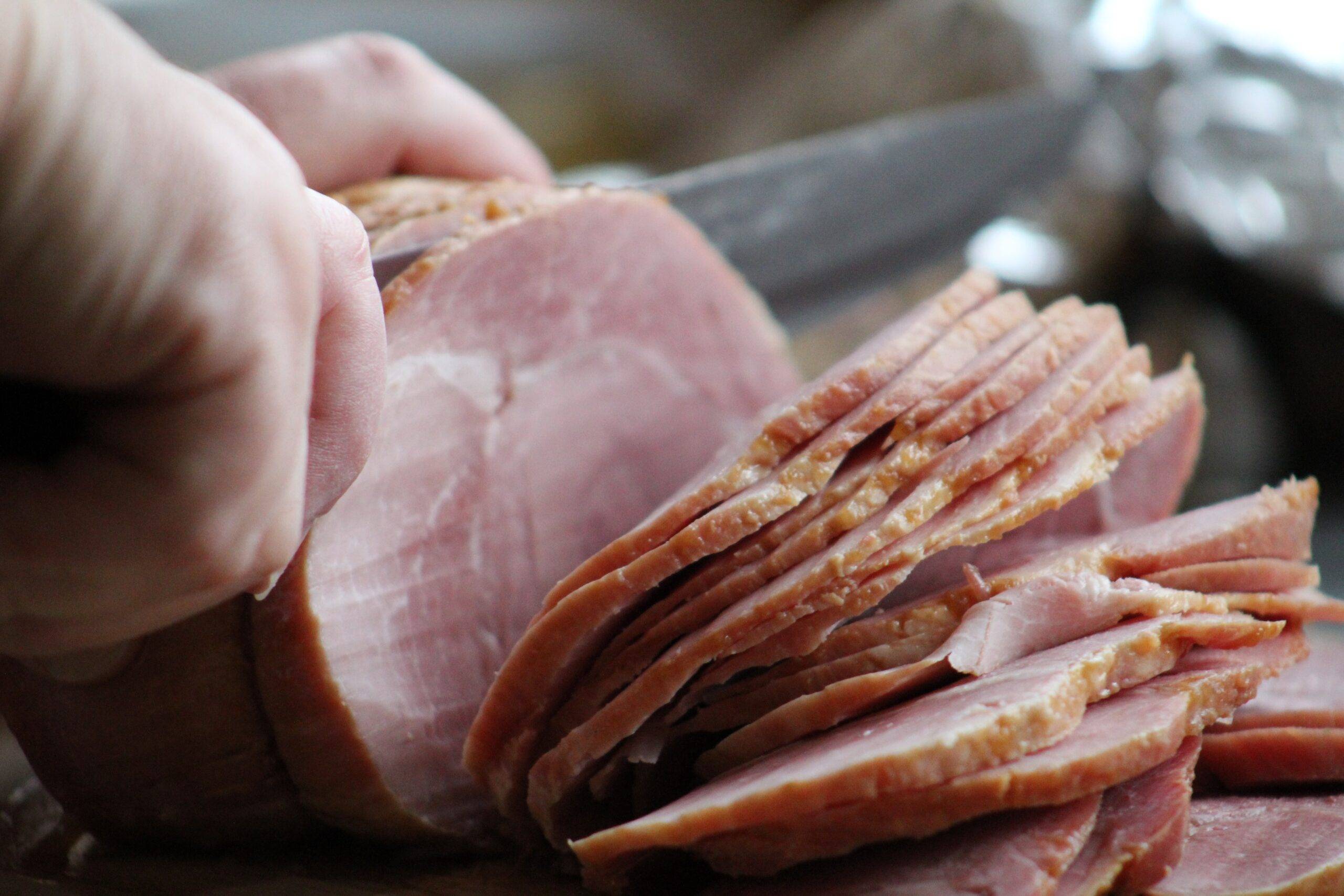
Baked Ham
Ingredients
- 1 whole ham bone-in or boneless, about 8-10 pounds
- 1 cup brown sugar packed
- 1/2 cup Dijon mustard
- 1/4 cup maple syrup
- 1/4 cup pineapple juice
- 1 tablespoon whole cloves
- 1/2 teaspoon ground cinnamon
- 1/4 teaspoon ground nutmeg
- Pineapple rings and maraschino cherries for garnish optional
Instructions
- Preheat the Oven:
- Preheat your oven to 325°F (163°C).
- Prepare the Ham:
- If the ham is not pre-cooked, ensure it’s fully thawed. If it’s pre-cooked, check the packaging for specific instructions.
- Using a sharp knife, score the ham’s surface in a diamond pattern, making cuts about 1/2 inch deep.
- Insert Cloves:
- In each diamond of the scored ham, insert whole cloves. This not only adds flavor but also creates an attractive presentation.
- Prepare the Glaze:
- In a saucepan over medium heat, combine brown sugar, Dijon mustard, maple syrup, pineapple juice, ground cinnamon, and ground nutmeg.
- Stir the mixture continuously until the brown sugar is fully dissolved and the glaze is well combined. Remove from heat.
- Glaze the Ham:
- Place the ham in a roasting pan, and generously brush the glaze over the entire surface of the ham. Ensure it gets into the scored cuts for maximum flavor.
- Bake:
- Cover the ham loosely with aluminum foil and bake in the preheated oven. The general rule is to bake for about 15-20 minutes per pound, but follow the specific instructions on the ham packaging.
- Baste:
- Every 30 minutes, baste the ham with the pan juices. This helps keep the ham moist and adds layers of flavor.
- Final Glaze:
- During the last 30 minutes of baking, uncover the ham and brush with another layer of the glaze. This will give the ham a beautiful, caramelized finish.
- Check for Doneness:
- Use a meat thermometer to ensure the ham reaches an internal temperature of 140°F (60°C).
- Rest and Serve:
- Once done, remove the ham from the oven and let it rest for about 15-20 minutes before carving. This allows the juices to redistribute.
- Garnish (Optional):
- If desired, garnish the ham with pineapple rings and maraschino cherries for a festive touch.
- Carve and Enjoy:
- Carve slices against the grain, serve, and enjoy your delicious baked ham!
Conclusion:
In the grand tapestry of holiday traditions, the Christmas ham stands as an enduring symbol of festive abundance and familial warmth. Its journey through time, from medieval England’s boar’s head extravagance to the diverse preparations in today’s global kitchens, tells a story of cultural evolution and culinary innovation.
As we unwrap the layers of history surrounding the Christmas ham, we unveil not just a culinary tradition but a heartfelt connection to the past. The ham, with its roots reaching into medieval feasts, has transcended its origins to become a cherished centerpiece that graces tables around the world during the yuletide season.
The Christmas ham tradition captures the essence of sharing, generosity, and the joy of gathering loved ones around a bountiful table. The variations in preparation, from glazed and honey-kissed hams to those adorned with cloves and aromatic spices, showcase the adaptability and creativity that families bring to this timeless tradition.
Moreover, the Christmas ham isn’t merely a dish; it’s a culinary ambassador that bridges generations. It serves as a reminder of the resilience of traditions and the way they intertwine with our modern lives. As families come together to carve into the succulent layers of ham, they participate in a ritual that connects them to their ancestors and, simultaneously, creates memories for the generations yet to come.
So, when you savor the rich flavors of a perfectly cooked Christmas ham, you’re not just enjoying a delicious meal; you’re partaking in a festive custom that echoes through centuries. It’s a symbol of joy, continuity, and the enduring spirit of celebration that transcends cultural boundaries.
As the aroma of the Christmas ham fills homes and hearts, it carries with it the collective stories of families, communities, and the shared love that defines the holiday season. Here’s to the Christmas ham — a culinary masterpiece that brings people together and continues to be a beacon of warmth and tradition in the heart of our festive celebrations.



